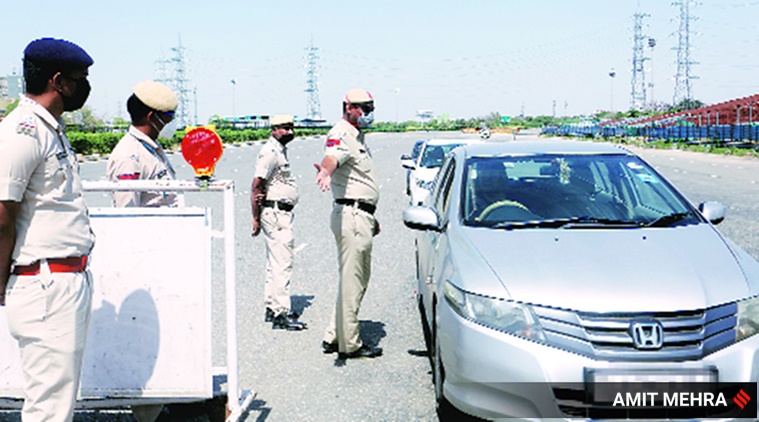 Officials have said that most of the new cases are linked to people who visited the capital recently
Officials have said that most of the new cases are linked to people who visited the capital recently
The number of Covid-19 cases recorded in Gurgaon have more than doubled in the last 10 days, with over 80 more people testing positive for the infection in the district during this period.
According to the daily health bulletins released by the Gurgaon Health Department, the district, until the night of April 30, had 57 cases —19 were ‘active’ and 38 had recovered and been discharged. As of Saturday night, however, the number of cases recorded stood at 142, of which 78 are ‘active’. A total of 85 people have tested positive in a mere 10 days.
Officials from the health department said there is no reason to panic because of the sudden surge “since most cases that have emerged are related to Delhi”, with those testing positive either being people who visited the capital recently or their contacts.
“There have been three main reasons so far due to which many cases have emerged: first, it was the Nizamuddin Jamaat (gathering), then the Khandsa Mandi, from where 24-27 cases have now come forth, and then there are carriers of the infection who have a travel history to Delhi, who, along with their contacts, are testing positive,” said Dr Jaswant Singh Punia, Chief Medical Officer (CMO), Gurgaon.
The health bulletin reveals that at least 24 of the 85 cases recorded in the last 10 days have emerged from Khandsa mandi. Officials said that after Delhi’s Azadpur Mandi began emerging as a cluster of cases, they began screening people in Gurgaon who worked at the mandi. Close to 2,000 people were screened and samples of more than 150 were collected, said officials, adding that most of those who tested positive were labourers involved in loading and unloading merchandise from trucks and tempos.
Among the areas that have also emerged as hotspots of coronavirus in these 10 days is Dundahera village, where the first person to test positive was a resident who frequently visited RML Hospital in Delhi, where his son who has epilepsy has been admitted for treatment. Officials said “16 or 17 people” from the neighbourhood have since tested positive.
This trend of several contacts of people infected with coronavirus testing positive has, however, emerged in other parts of the city as well. This is in contrast to the initial days when people were testing positive but the infection was not often detected in the samples of their contacts, with reports returning negative. CMO Punia attributed this to the fact that in the cases now emerging, testing has been delayed, leading to carriers not knowing they have been exposed to the virus.
“Initially, those who were testing positive were people who had recently returned from abroad. They were alert and got their screening done immediately. Their samples were taken, and they were isolated before the infection had a chance to really spread,” said the CMO.
“Now the people who are testing positive, however, have been travelling up and down from Delhi for work or other reasons for several days, and had not got themselves tested. It was only when someone they had been in contact with in Delhi tested positive that they got their own tests done and were found to be carriers. As a result, many of their contacts also caught the infection in the meantime,” he said.
Increased screening and testing, the CMO said, is another reason why the number of cases have seen a steep rise this month.
“The more we screen and test, the more cases will emerge, that is expected. In the case of Dundahera, for example, we screened the entire village. In Khandsa mandi too, 2,000 people were screened and more than 150 samples collected,” he said.
The daily health bulletin reveals that while 5,857 samples had been sent for testing until the evening of April 30, this figure increased to 8,217 by Sunday evening, indicating that 2,360 samples were sent for testing in the last 10 days.